Journeys in Japan Episode Rating Graph
Feb 2010 - present

Feb 2010 - present
6.6

| E1 | E2 | E3 | E4 | E5 | E6 | E7 | E8 | E9 | E10 | E11 | E12 | E13 | E14 | E15 | E16 | E17 | E18 | E19 | E20 | E21 | E22 | E23 | E24 | E25 | E26 | E27 | E28 | E29 | E30 | E31 | E32 | E33 | E34 | E35 | E36 | E37 | E38 | E39 | E40 | E41 | E42 | E43 | E44 | |
|---|---|---|---|---|---|---|---|---|---|---|---|---|---|---|---|---|---|---|---|---|---|---|---|---|---|---|---|---|---|---|---|---|---|---|---|---|---|---|---|---|---|---|---|---|
| S1 | ||||||||||||||||||||||||||||||||||||||||||||
| S2 | ||||||||||||||||||||||||||||||||||||||||||||
| S3 | ||||||||||||||||||||||||||||||||||||||||||||
| S4 | ||||||||||||||||||||||||||||||||||||||||||||
| S5 | ||||||||||||||||||||||||||||||||||||||||||||
| S6 | ||||||||||||||||||||||||||||||||||||||||||||
| S7 | ||||||||||||||||||||||||||||||||||||||||||||
| S8 | ||||||||||||||||||||||||||||||||||||||||||||
| S9 | ||||||||||||||||||||||||||||||||||||||||||||
| S10 | ||||||||||||||||||||||||||||||||||||||||||||
| S11 | ||||||||||||||||||||||||||||||||||||||||||||
| S12 | ||||||||||||||||||||||||||||||||||||||||||||
| S13 | ||||||||||||||||||||||||||||||||||||||||||||
| S14 | ||||||||||||||||||||||||||||||||||||||||||||
| S15 | ||||||||||||||||||||||||||||||||||||||||||||
| S16 |
Browse episode ratings trends for Journeys in Japan. Simply click on the interactive rating graph to explore the best and worst of Journeys in Japan's 535 episodes.
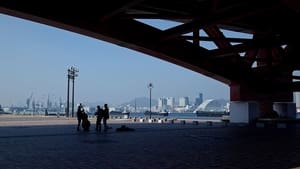
S12 Ep20
10.0
21st Sep 2021
With the world pandemic, music venues across the globe have gone silent. So this time on Journeys in Japan, American actor Charles Glover takes us back in time to get lost in live music. He revisits Kobe, the city of jazz, Tsugaru, the heart of the shamisen and Osaka, the place for the blues. And he gets the word from local musicians about the current situation in their area.
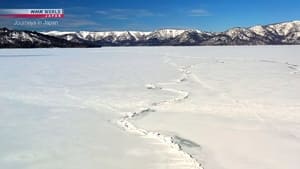
S12 Ep6
10.0
30th Mar 2021
Winter in Hokkaido Prefecture... It's a fascinating time to visit for the stunning snowscapes and natural phenomena caused by the severe cold. Kussharo, located in a huge caldera, is part of the Akan-Mashu National Park. Cradled by the outer rim of the crater, heavy, cold air accumulates and the temperature plummets below minus 20 degrees Celsius on windless days. Lake Kussharo is the largest lake in Japan that completely freezes over. Hot springs gush out from many spots, releasing steam. Snow, ice and the steam interact in the ultra-low temperatures to create mysterious and stunning natural works of art.

S12 Ep5
10.0
23rd Feb 2021
Hokkaido Prefecture in mid-winter is a frigid land of snow and ice, where temperatures can drop below minus 20 degrees Celsius for weeks on end. But this is the perfect time to see wildlife and natural phenomena that can only be glimpsed at this time of year. And, of course, it's a paradise for winter sports and other outdoor activities. This episode is presented by Bill Sullivan, the narrator for Journeys in Japan. He loves Hokkaido and the great outdoors. Right now, he can't make any trips, due to the coronavirus pandemic. But he hasn't stopped making travel plans. So this time he introduces 3 places and activities that are on his wish list, all in Hokkaido.
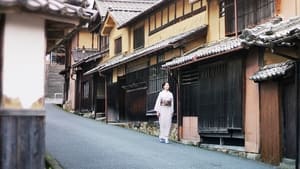
S12 Ep1
10.0
5th Jan 2021
The Kyotango area of northern Kyoto Prefecture is known as the birthplace of Tango Chirimen, a variety of crepe silk with a finely crimped texture and luxuriously soft feel. For 300 years, this fabric has been an essential part of its history and culture. On this episode of Journeys in Japan, we meet the people who produce Tango Chirimen, from the craftsmen who maintain the traditional skills of weaving and dyeing, to the modern artisans creating contemporary designs. And we explore the deep connection of this fabric with the natural environment of the Kyotango area.

S11 Ep25
10.0
22nd Dec 2020
The city of Ojiya is hidden in the mountains of central Niigata Prefecture, some 200 kilometers north of Tokyo. Because this region gets some of the heaviest snowfall in all Japan, it is known as the Snow Country. Since the old days, people in Ojiya have used this location and climate to their advantage, developing a distinctive culture and traditions all their own. These include Nishiki-goi (ornamental carp) and Ojiya chijimi, a fabric that is recognized by UNESCO as an intangible cultural heritage. On this episode of Journeys in Japan, Paul Riley visits Ojiya in the autumn months, to discover its traditional specialties.
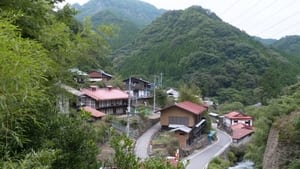
S11 Ep17
10.0
27th Oct 2020
Nanmoku is a village that lies deep in the mountains of Gunma Prefecture, northwest of Tokyo, which blossomed during the period of Japan's modernization over a century ago. It grew and prospered thanks to sericulture -- raising the silkworms whose cocoons were the source of raw silk, an essential cornerstone of Japan's efforts to bring in foreign currency and new technology. However, the development of synthetic fibers led to a drop in demand for raw silk, and this led to the decline of Nanmoku as well. Its population has dropped from over 10,000 some 60 years ago to only about 1,700 residents now. But thanks to its remote setting, the village has been spared large-scale development, and its traditional culture and buildings have been preserved much like a time capsule. On this episode of Journeys in Japan, Teodora Forgo from Hungary explores the beautiful natural setting and fascinating history of Nanmoku Village, deep in the mountains northwest of Tokyo.

S11 Ep16
10.0
20th Oct 2020
Kamiyama, Tokushima Prefecture, is a mountain village with a population of 5,000. But despite its tranquil setting, it's home to satellite offices of firms headquartered in Tokyo or Osaka Prefecture. An inflow of people from big cities is bringing changes to Kamiyama. We meet a group of new residents who are working to turn Fusuma Karakuri, which uses background panels for Japanese traditional performing art, puppet theater, into a new form of entertainment. We also visit an outdoor museum with modern artworks. In this episode of Journeys in Japan, Martin Holman, an American who heads a puppet troupe in Tokushima, explores old and new aspects of Kamiyama and zooms in on its charms.
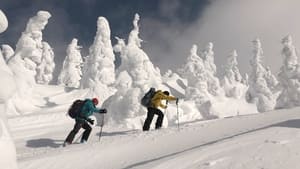
S11 Ep9
10.0
13th Apr 2020
The Hakkoda mountain range soars in central Aomori Prefecture. It's famous for its heavy snowfall, massive "snow monster" or frost-covered trees and its backcountry skiing. These days more overseas visitors are coming to enjoy the deep powder and local culture. International mountain guide Cveto Podlogar from Slovenia drops down the stunning slopes of Hakkoda with a local guide.

S11 Ep5
10.0
9th Mar 2020
Mishima Town, in western Fukushima Prefecture, receives some of the heaviest snowfall in all of Japan. During the winter, when the local people are unable to work in their fields, they spend their days making traditional handicrafts, using vines, leaves and bark from plants that grow wild on the nearby mountainsides. It's a folk tradition that continues to this day. Leina Bambino is an English instructor from the United States. On this episode of Journeys in Japan, she visits Mishima to meet the people living there, and sees how they keep their traditions alive. She also joins in a New Year ceremony that's been held in this area for over 200 years.
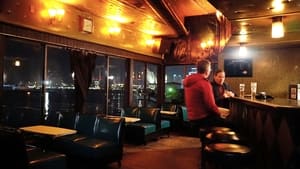
S11 Ep4
10.0
25th Feb 2020
Yokohama, just south of Tokyo, is a vibrant port city steeped in history. When Japan first opened its first doors to the West in the mid-19th century, they opened in Yokohama. Soon after, a foreign settlement was established, serving as a window to Western culture. Photographer Alfie Goodrich focuses his lens on the cosmopolitan port city, discovering its beauty and multicultural heritage.
S10 Ep17
10.0
11th Jun 2019
Uchiko, which is 700 kilometers southwest of Tokyo in Shikoku's Ehime Prefecture, flourished as a pilgrimage post town on an ancient highway. In the city center, Machiya residences have been carefully preserved. Australian actor, Luke Bridgford explores historic Uchiko, discovering its traditional architecture and candle craft, as well as an ancient kite festival in which he participates in a sky battle.
S10 Ep33
9.5
19th Nov 2019
Iwamizawa is located about 40 minutes by train from Sapporo in Hokkaido Prefecture. It flourished as a transportation hub for coal, but spiraled into decline following the closure of the mines in the 60's and 70's. However, blessed with vast farmland, Iwamizawa was able to transform itself into a leading agricultural district in Japan. These days, people from across the country are migrating to the area where the miners once lived, sparking a new movement. On this episode of Journeys in Japan, Kyle Card from Canada meets people bringing a new vitality to Iwamizawa.
S10 Ep29
9.5
8th Oct 2019
Kotohira, in western Kagawa Prefecture developed around the famous shrine complex known as Kotohira-gu. Some 2-million tourists visit annually from all over the world. In the olden days, pilgrims who came from around the country, bought Uchiwa paper fans as souvenirs, and enjoyed eating the local specialty Sanuki noodles. Shizuka Anderson from Canada, experiences the culture of hospitality that developed around these pilgrimages.
S10 Ep28
9.5
1st Oct 2019
Rausu lies on the coast of the Shiretoko Peninsula, in eastern Hokkaido Prefecture. Most of the peninsula is designated as a national park, to preserve its rich natural environment. Tours by boat offer visitors the opportunity to see orcas and whales, as well as brown bears on the seashore. The fertile waters off Rausu also provide abundant catches of many kinds of fish. One of the main specialties of this area is kombu (kelp seaweed), an essential ingredient that adds flavor and umami to the dashi stocks that underpin Japanese cuisine. Rausu kombu is considered some of the finest in Japan and is in strong demand from high-end Japanese restaurants around the country. The harvest takes place from late July through the end of August. On this episode of Journeys in Japan, British photographer Alfie Goodrich visits Rausu and meets the kombu harvesters. He also goes to observe the wildlife that proliferates on the peninsula.
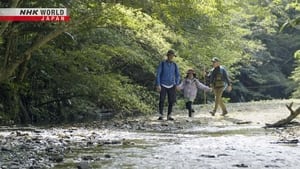
S14 Ep11
9.0
25th Apr 2023
Yanbaru is an area in the north of Okinawa Prefecture's main island. Covered by subtropical evergreen forest, it is home to a diverse range of native species and a unique ecosystem. In 2021, it was listed as a UNESCO Natural World Heritage site. In this journey, a father-daughter pair visits villages scattered across Yanbaru and meet locals who share a strong bond with their land.
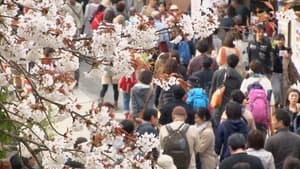
S12 Ep21
9.0
28th Sep 2021
Across Japan, communities highlight their distinctive charms to attract visitors. On this episode of Journeys in Japan we revisit 3 locales that have come up with creative ways to put themselves on the map, becoming known not only in Japan but around the world.

S11 Ep23
9.0
8th Dec 2020
Deep in the mountains of Tochigi Prefecture, 100 kilometers north of Tokyo, Ashio has long been known as a mining town. Copper deposits were first discovered there 400 years ago and mining continued there until the 1970's. In its heyday, the mine produced 40 percent of all of Japan's copper and nearly 40,000 people lived in the area. Although mining brought prosperity, it also created massive pollution: Ashio became infamous as the site of the country's first major pollution disaster. Sulfur dioxide gas from the refining process killed off the surrounding forests. And huge amounts of toxic chemicals were carried downstream to the lowlands by the Watarase River. On this episode of Journeys in Japan, potter Euan Craig travels to Ashio to see for himself how people have brought life back to the mountains, thanks to a massive reforestation program.
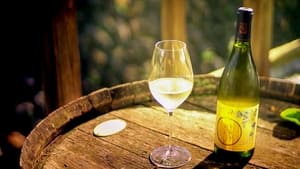
S11 Ep22
9.0
1st Dec 2020
Yamanashi Prefecture has been a pioneer in winemaking in Japan since the mid-19th century when farmers began converting rice and mulberry fields into vineyards for the native Koshu grape. Nowadays, the crisp white wine has been winning awards at global wine events. On Journeys in Japan, we meet the passionate people behind the most talked about Koshu labels -- some coming from old winery families and others from unrelated industries.
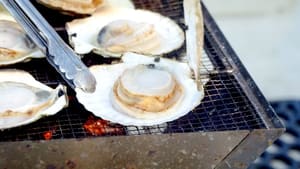
S11 Ep21
9.0
24th Nov 2020
The Michinoku Coastal Trail runs along the Pacific coast of northeastern Japan, covering a distance of about 1,000 kilometers through 4 prefectures, from Aomori down to Fukushima. It was launched by Ministry of the Environment following the 2011 Great East Japan Earthquake. On this episode of Journeys in Japan, Canadian actor Kyle Card hikes from Ofunato to Rikuzen-takata in southern Iwate Prefecture. He enjoys the bracing landscape, meets the local people, and sees how communities along the way are rebounding from the devastating Great East Japan Earthquake and tsunami of 2011.
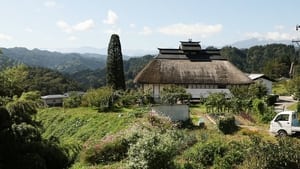
S11 Ep19
9.0
10th Nov 2020
Ogawa Village in Nagano Prefecture is famous throughout Japan for its beautiful scenery. Even though it lies between 2 popular tourist spots, Nagano City and Hakuba, Ogawa is not overrun by visitors. With its majestic vistas of the Japanese Alps and laidback pace of life, it's the ideal destination for a quiet get-away.
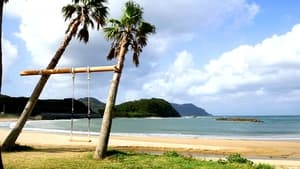
S11 Ep18
9.0
3rd Nov 2020
Itoshima, in western Fukuoka Prefecture, has been drawing attention in recent years as a popular place to relocate to from major cities. The reasons? Easy access to the prefecture's biggest city, Fukuoka; stunning beaches and mountains, alongside a vibrant startup culture and art scene. On Journeys in Japan, Brandon Chin, an American who fell in love with Itoshima for its ideal work-life balance, shows us around his adopted town.
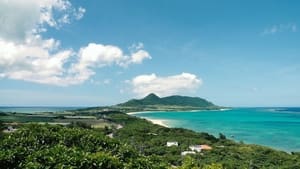
S11 Ep12
9.0
18th Aug 2020
Ishigaki, in Okinawa Prefecture, is a stunning, sub-tropical island that lies some 2,000 kilometers southwest of Tokyo. This past spring, the mayor introduced a policy to drastically reduce the number of visitors from outside to stem the spread of the coronavirus. Though the restriction was lifted it has dealt a heavy blow to tourism, the island's main industry. Eric van Rijn, who lives on Ishigaki and works in tourism, visits fellow islanders as they try to make a fresh start after the initial corona shock.
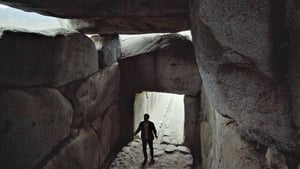
S11 Ep3
9.0
4th Feb 2020
Asuka in Nara Prefecture was the center of Japan's politics and culture for more than 100 years from the end of the 6th century. The advanced civilization that developed there left behind many legacies, especially its mysterious stone structures. The massive monuments have spawned countless theories. Actor Luke Bridgford explores these imposing stone structures, as well as their enduring puzzle, and visits other historic sites.
S10 Ep31
9.0
5th Nov 2019
The Katsura River runs through a beautiful valley in Yamanashi Prefecture, not far from Tokyo. Fed by springs from Mt. Fuji and the surrounding area, the river is known for the clarity and volume of its water. This episode of Journeys in Japan introduces fun ways to enjoy the Katsura River, such as rafting, tubing, traditional angling, and Sawanobori (river climbing), making it the perfect getaway from the muggy midsummer heat of downtown Tokyo.
S9 Ep32
9.0
27th Nov 2018
The Houki-cho district lies in the west of Tottori Prefecture close to the foot of volcanic Mt. Daisen. It has a population of around 11,000, most of whom live from farming and rearing cattle. The town lies on an ancient trail once used by the pilgrims who made their way to Izumo Shrine, one of the most venerated Shinto sites in Japan. Because of this proximity, ancient legends of the gods have been kept alive in Houki-cho. Once a year, in October, the local people gather to conduct a traditional ritual that has been passed down through countless generations. The ritual has its roots in an ancient legend that the deity worshipped at the shrine was saved from a shipwreck by octopuses. On this edition of Journeys in Japan, John Daub from the US visits Houki-cho, samples the local specialties and meets the local people who are keeping the old ways alive.
S9 Ep31
9.0
13th Nov 2018
Fukuoka, the largest city in southern Japan, was a merchant town in ancient times that prospered with foreign trade. It gained two distinctive features in the dawn of the Edo Period (1603 – 1868), when a special district for samurai warriors was established next to the time-honored merchant town. Fukuoka has since nurtured and passed down their respective cultures. Today, you can glimpse such inheritances in amazing spinning top performances and yabusame, the art of mounted archery.
S4 Ep32
9.0
1st Oct 2013
Kasumigaura is the 2nd largest lake in Japan. Just an hour and a half by train from central Tokyo, Lake Kasumigaura is also considered one of the 100 most beautiful places in Japan. Erin Fowler came to Japan from the US 3 years ago, and works as an English teacher at an elementary school in Ibaraki Prefecture. On this episode of Journeys in Japan, Erin visits the Kasumigaura area for the first time.
S4 Ep7
9.0
12th Mar 2013
The Sanriku Coast of northeastern Japan is a beautiful area with stunning scenery. It was devastated by the great earthquake and tsunami of March 2011. But life is gradually returning to normal and people are rebuilding their communities and their lives. On this edition of Journeys in Japan, JJ returns to visit another stretch of the Sanriku Coast.
S3 Ep15
9.0
10th Apr 2012
This week, we visit Osaka, the capital city of Osaka prefecture, also known as the town of "Kuidaore" means there are too many delicious foods and you can't stop eating until you pass out. Our reporter, John Gatewood, explores the best places to eat and the unique food culture of Osaka.
S3 Ep6
9.0
14th Feb 2012
1,200 years ago, the Buddhist saint Kukai (also known as Kobo Daishi) established 88 temples in Shikoku. Later, it became popular to make a pilgrimage, along a route around the island, visiting all of the temples. This pilgrimage is known as ohenro, and the pilgrims are called ohenro-san. This week on Journeys in Japan, Bene sets out on the first stage of her pilgrimage in Tokushima Prefecture. She has a guide with her for part of the journey: David Moreton is a college lecturer who has been studying the pilgrimage for 20 years. Together they make their way along a mountain trail that is considered one of the toughest: overcoming difficulties lie this is an essential part of the pilgrims' spiritual training. Bene finds that confronting her own self as she walks, her awareness becomes clearer. She takes in deeply the beautiful scenery she sees, and the warmth of the people she meets.
S2 Ep36
9.0
8th Nov 2011
In this journey, musician, Michael Rivas, will be taking a two-day trip to Yamagata Prefecture in autumn. He will be enjoying magnificent views from Hōjusan Risshakuji Temple, one of the major tourist spots of the Tohoku region, and exquisite seasonal dishes in an onsen hot spring inn, an authentic wooden architecture in Ginzan-onsen. He will also take a stroll through the onsen streets in the evening, illuminated by gaslights, and spend a heartwarming time meeting the local people on a Mogami River boat tour.

S13 Ep2
8.5
8th Feb 2022
The city of Hamamatsu lies in Shizuoka Prefecture, midway between Tokyo and Osaka Prefecture. Since the old days, the area has thrived as a key point on the route connecting eastern and western Japan. Nowadays it is known as a hub for manufacturing. Many companies in Hamamatsu started off as small factories but have now grown into global brands, especially in the fields of motorcycles and musical instruments. On this episode of Journeys in Japan, we visit some of these companies, to spotlight their remarkable level of craftsmanship.
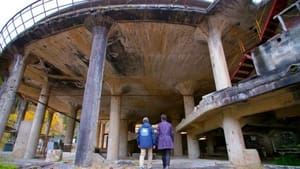
S11 Ep1
8.5
14th Jan 2020
Asago lies deep in the mountains of Hyogo Prefecture in western Japan. In recent years it has been drawing crowds of visitors, who come to view its famous "Castle in the Sky," which appears to float above a sea of clouds. The Asago area also has a proud heritage as a major center for mining, and it boasts impressive relics from the time when it played a key role in Japan's modernization. Oscar Brekell is a specialist and instructor of Japanese tea, who comes from Sweden. On this episode of Journeys in Japan, he visits Asago to witness the spectacular natural scenery. He also explores the industrial heritage sites and meets the local people who are working to keep their community vibrant.

S10 Ep37
8.5
24th Dec 2019
Mt. Myogi, located in western Gunma Prefecture, is famous for its unusual rock formations and beautiful autumn foliage. At a little over 1,000 meters, it's not high, but has fun courses, some which require advanced skills, making it a popular with climbers. Since the mountain has been worshipped from ancient times visitors can also enjoy the area's historic atmosphere, including an ancient highway. Our reporter explores Mt. Myogi, with the highlight coming at the end when she climbs a towering T-shaped rock.

S10 Ep36
8.5
10th Dec 2019
Osaka is the largest city in western Japan. The 16th-century warlord Toyotomi Hideyoshi, who unified Japan after a long period of civil war, chose it as his power base and built a castle there to serve as the power base for his clan. In the years that followed, Osaka became a major logistical and economic hub. From the mid-19th century, Osaka rode the wave of Japan's modernization and the city expanded rapidly. The development of its spinning industry brought prosperity. During this period it was known as "Great Osaka" and saw the construction of many handsome commercial buildings, several of which survive to this day. From the late 1940's, the city was a driving force for Japan's postwar reconstruction and rapid economic growth. In 1970 it became the first city in Asia to host a world's fair, known as Expo '70. On this episode of Journeys in Japan, American architect James Lambiasi visits Osaka and explores its history and culture, as reflected in its impressive architecture.
S10 Ep30
8.5
22nd Oct 2019
The Nakanojo Biennale is an art festival held in beautiful Nakanojo in Gunma Prefecture. It boasts one of the largest artist-in-residence programs in Japan, with creators from all over the world gathering in this small town to work on their site-specific pieces. With world-class contemporary art installations, the festival draws large crowds during its one-month run. Historically known as a hot spring town, Nakanojo has many cultural events passed on to today. Belgian art and fashion PhD candidate Saskia Thoelen discovers how contemporary art has transformed a rural town that also reveres tradition.
S3 Ep11
8.5
13th Mar 2012
This edition of Journeys in Japan features Japan's ancient capital, Nara. We will take a close look at architecture and Buddhist statues dating back more than 1000 years. Our reporter William Reed, an American columnist who's been in Japan for 40 years, is our guide to the city that is home to eight world heritage sites and important ancient treasures.
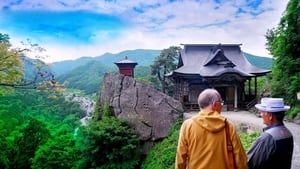
S15 Ep15
8.0
16th Jul 2024
Yamagata Prefecture, some 300 kilometers north of Tokyo, is a mountainous region. Around 70% of its land covered by forests and to this day it boasts a long tradition of using that wood in its buildings. On this episode of Journeys in Japan, American architect James Lambiasi visits a hot spring resort where the main street is lined with hotels built from timber; an ancient Buddhist temple where you can find wooden buildings standing on top of sheer cliffs; and a splendid row of wooden warehouses constructed 130 years ago and still in pristine condition. James also observes a construction company that has developed cutting-edge technology for using timber in large-scale contemporary architecture. He is given a hands-on demonstration of how the forests are maintained, and he meets an outdoors guide who shows the way he lives in the backwoods.
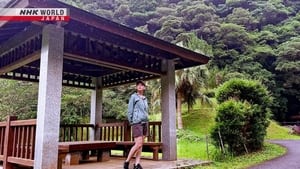
S14 Ep18
8.0
11th Jul 2023
Amami Oshima Islands in Kagoshima Prefecture receives one of the largest amounts of rain in Japan. Its rainy season, which runs from May through June, in particular, provides enough water to sustain its lush nature, including rare species of plants and animals, all year round. In this episode of Journeys in Japan, outdoor writer from Sweden Janni Olsson enjoys Amami's rainy season as she engages in activities not available elsewhere and learns about the island's culture.
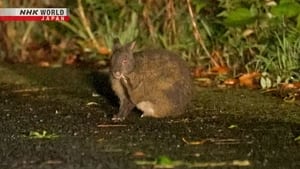
S14 Ep17
8.0
4th Jul 2023
Amami Oshima Islands, designated as a Natural World Heritage site in 2021, is home to rich biodiversity, including many endemic species. For instance, the Amami rabbit is a living remnant of ancient hares, found only on Amami Oshima and Tokunoshima islands. In this episode of Journeys in Japan, actor Michael Keida heads deep into the forest in search of the subtropical island's rare plant and wildlife. And he meets people who share their knowledge of the forests and sea.
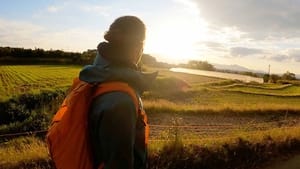
S13 Ep1
8.0
18th Jan 2022
One of Japan's oldest roads, the Yamanobe no Michi runs about 25 kilometers along the foot of the mountains in the Nara basin, linking Sakurai and Nara Cities. Agriculture prospers along the route, which is also dotted with many significant shrines and ancient burial mounds. Michael Keida, an American actor who also farms, heads down the southern stretch, visiting historical places and meeting people who live close to the land.
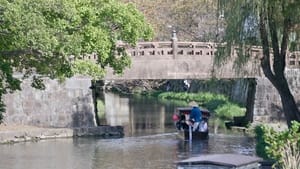
S11 Ep20
8.0
17th Nov 2020
Omi-hachiman is an old castle town that flourished as a transportation hub on Lake Biwa. It retains the remnants of the olden days, including grand merchant homes and the Hachiman-bori moat, which served as a logistics base. William Merrell Vories, who came to Japan from the United States before World War II and designed 1,600 significant buildings across Japan, made Omi-hachiman his home for over half a century. His residence in Omi-hachiman has been converted into a museum. On this episode of Journeys in Japan, James Kohlman, a musician and actor from the United States, traces the footprints of Omi Merchants, who crisscrossed Japan from their base in Omi-hachiman, as well as the remarkable William Merrell Vories. And he meets people in whom their spirits live on.

S10 Ep35
8.0
3rd Dec 2019
Nanyo City lies in Yamagata Prefecture, in the Tohoku region north of Tokyo. The city is focusing on boosting tourism for visitors with disabilities. Wheelchair influencer Ryoko Nakajima visits Nanyo together with US-born TV talent Michelle Fujisaki, to enjoy the barrier-free facilities. They harvest fruit, visit a hot-spring hotel and listen to local folk tales. Then, using special equipment, Ryoko tries paragliding assisted by an experienced instructor.
S10 Ep34
8.0
26th Nov 2019
Ise City is in southeastern Mie Prefecture in Central Japan. It is home to one of Japan's most sacred sites, Ise Jingu Shrine. For hundreds of years it has welcomed pilgrims from all over the country. This has nurtured many traditions, such as the tasty confectioneries it offers to travelers and crafts that serve as souvenirs. Jennifer Julien from France takes in the most important rituals of the year, and experiences the culture that was cultivated over time through Ise worship.
S10 Ep27
8.0
24th Sep 2019
The Michinoku Coastal Trail, which was launched by the Environment Ministry, is a long trail along the Pacific coast that crosses 4 prefectures from Aomori Prefecture, in the north, to Fukushima Prefecture, in the south. Canadian actor, Kyle Card walks a stretch connecting 3 villages in Iwate Prefecture to get a feel of Tohoku's landscape and see how the local people are stepping forward and recovering from the 2011 Great East Japan Earthquake.
S10 Ep25
8.0
3rd Sep 2019
Muroran, in southwestern Hokkaido Prefecture, flourished as an industrial city, mainly in steel manufacturing. After the 1970's, the city declined with industrial sector changes and other factors. But in recent years, tourism is up with popular night factory viewing, retro architecture touring as well as dolphin and whale watching. British photographer Alfie Goodrich discovers Muroran's wonderful people and photogenic charms.
S10 Ep21
8.0
30th Jul 2019
The Hachimantai Plateau straddles the border of Iwate and Akita Prefectures. A large area around its summit is covered by wetlands and during the warmer months, from June onward, these marshes turn into a garden of alpine flowers, attracting visitors from near and far. The Hachimantai region also boasts a wealth of hot springs. There are various ways to enjoy this gift of nature, such as by relaxing in a Rotenburo (open-air bath), while enjoying the view. Or you can enjoy Ganban-yoku, lying down on the warm rocks, soaking in the heat that emanates from the earth. In this area, people like to book into hot spring facilities for long-term stays of a week or more. This system, known as "toji," has long been popular among farmers who come to rest and ease their fatigue in the off-season.
S10 Ep20
8.0
2nd Jul 2019
Japanese green tea is produced from tea leaves that are steamed and then dried, unlike black tea, for which the leaves are first fermented. Shizuoka Prefecture is the largest tea-growing region in Japan. Various kinds of green tea are produced there, according to the ways in which it is grown and processed. On this episode of Journeys in Japan, American actress Ananda Jacobs visits Shizuoka during the peak tea harvesting season. She delves into the history of the region, to find how tea came to be such an important industry. And she meets the people who devote their lives to producing this remarkable drink.
S10 Ep18
8.0
18th Jun 2019
Yamaguchi Prefecture lies in the far west of Japan's main island, Honshu. It has numerous landscapes that are unlike any other part of Japan: a limestone quarry evoking a giant ancient amphitheater; an underground cave system with intricate stalactites and stalagmites; a tiny island where the village boasts traditional walls of stone and plaster; and many more. American actor Charles Glover visits Yamaguchi to take in these magnificent, distinctive views and to discover the stories that underlie them.
S10 Ep13
8.0
7th May 2019
John Moore, from Ireland, is a social entrepreneur. Euan Craig, from Australia, is a potter. The men take off on a road trip around western Miyazaki Prefecture, in Kyushu. They get a glimpse into the local life in the mountainous village of Shiiba. And in the city of Ebino, they learn about the simple, ancient worship of a rice deity called Tanokansa.
S10 Ep6
8.0
5th Mar 2019
Iheya is the northernmost island of Okinawa Prefecture and takes an hour and twenty minutes by ferry from a port in the north of the main island. Approximately 35 kilometers in circumference Iheya has a population of about 1,100. Untouched by large-scale tourism development, the natural environment and people's lives have remained little changed. Our reporter takes a winter break on the remote island where he fishes for young octopus in the low tide at night, goes on a jungle and village run with locals and tourists, and makes tofu with seawater at a home inn…simple and unforgettable experiences.
S10 Ep5
8.0
26th Feb 2019
Lake Biwa is the largest lake in all of Japan. In winter, its remote northern coast is a place of unspoiled peace and silence. Since the old days, the local people have carefully preserved their places of worship, and their traditional handicrafts. On this edition of Journeys in Japan, Charles Glover follows an ancient highway, to discover an area of almost timeless calm.
S10 Ep3
8.0
12th Feb 2019
Nichinan city, situated in Miyazaki Prefecture in southwestern Japan, once prospered from fisheries and forestry. Aburatsu, which is a major district along the sea, flourished as a port town. But the area declined when the fishing industry collapsed. The Aburatsu shopping arcade also suffered through competition from a large shopping complex and depopulation in the 1980s. Many of the arcade's shops closed their shutters. But in 2014, a team was formed to revitalize the retail area and many vibrant spaces opened up. On Journeys in Japan, Kyle Card from Canada meets locals who have been creating appealing new businesses as well as community spirit.
S9 Ep33
8.0
18th Dec 2018
Kanazawa City in Ishikawa Prefecture developed as a castle town of the Kaga Domain under the Maeda Clan's rule. For about 300 years from the late 16th century onward, the powerful feudal lords encouraged the arts, resulting in gorgeous landscape gardening, gold leaf and other crafts. On this edition of Journeys in Japan, TV personality Leina Bambino explores Kanazawa's deep culture through its colors.
S9 Ep27
8.0
9th Oct 2018
The island of Iki lies off the coast of Kyushu, facing out towards the Korean Peninsula. In ancient times, Iki was an important crossroads for international exchanges. These days the island is a modest paradise of unspoiled nature, with beautiful beaches, gentle landscapes and excellent seafood. Just an hour away from Fukuoka by high-speed ferry, it makes an ideal tourist get-away. On this edition of Journeys in Japan, Mai Rapsh explores Iki and meets some of the people who are keeping its traditional charm alive for future generations.
S9 Ep4
8.0
20th Feb 2018
Oita Prefecture in Kyushu is one of Japan's best known places for onsen - or hot springs. The city of Beppu is especially famous for its numerous hot spring sources and the volume of hot water - and it attracts many tourists. Marie Krause is from Aachen, in Germany, which is also famous as a resort with many hot springs. On this edition of Journeys in Japan, Marie visits Beppu to discover the many different kinds of hot springs in the city. And she enjoys Japan's traditional onsen culture to its fullest.
S8 Ep24
8.0
12th Sep 2017
Taisetsuzan, also called Daisetsuzan, is a mountain range home to Hokkaido's highest peak. In addition to its excellent hiking trails, Taisetsuzan is popular for its clusters of alpine flowers that blossom all the way up to the summit in late July, when summer is in full swing. The primeval woodlands at the base of the mountain range are a habitat of the higuma brown bear. Summer visitors often see the animals frolicking on slopes where there are still snow patches. Taisetsuzan lies at a high latitude, so its alpine zone starts at around 1,700 meters above sea level, 800 meters lower than in the Japanese Alps. Komakusa, Ezo azalea and penstemon grow past that point, as well as spectacular clusters of Aleutian avens. On this episode of Journeys in Japan, Peter Skov visits a recently opened flower garden, learns about the brown bears, and sees spectacular fields of alpine flora.
S8 Ep21
8.0
8th Aug 2017
Shirakami Sanchi is a vast region of forested mountains in northern Japan, straddling the border of Aomori and Akita prefectures. It is home to one of the largest virgin beech forests in the world, which has had barely any human impact over the centuries. That is why the core area of Shirakami Sanchi has been registered as a UNESCO World Heritage site since 1993. On this edition of Journeys in Japan, Catalin Munteanu visits this ancient forest, which is also a popular destination for trekking and river activities, such as rafting.
S8 Ep19
8.0
25th Jul 2017
Each season in Japan brings its own special delicacies. When early summer arrives, that means it's cherry season. Seventy percent of all the cherries grown in Japan come from the Murayama district of Yamagata Prefecture, close to the Mogami River. The soil and climate here are perfect for cultivating the fruit. The moisture drains into the river system, and there is a wide fluctuation between the day and night-time temperatures. The cherries grown here are of a high quality, with a distinctive sweet-tart flavor. Since the old days, buckwheat has also been an important crop in this area. Local farmers have long produced soba noodles from their own home-grown buckwheat. Many of them have converted their homes into restaurants, and customers come from afar to enjoy the fragrance and firm texture of their specialty.
S8 Ep2
8.0
7th Feb 2017
Ogawayama (Mount Ogawa) is known as a "rock climber's paradise." Located near Kawakami Village in Nagano Prefecture, it takes about three hours to reach from Tokyo by car. The mountain is popular for having climbing spots located near its main base. The closest is only minutes away, while the farthest is only about an hour's walk. On this edition of Journeys in Japan we introduce the appeal of Ogawayama rock climbing, including bouldering. Our reporter Cveto Podlogar takes on the longest climbing route of Ogawayama, called "Eboshi Iwa Sa Ryosen." The route affords the thrill of heights and magnificent views along the way. After much climbing, Cveto enjoys creature comforts-he's glamping, Japanese-style.
S7 Ep32
8.0
15th Nov 2016
For hundreds of years, pilgrims have made their way to the hills of Chichibu, northwest of Tokyo, to follow an ancient pilgrimage route. Wearing special pure white tunics, they visit 34 Buddhist temples in the area that are dedicated to the Bodhisattva Kannon. On this edition of Journeys in Japan, Estella Mak returns to Chichibu to complete the pilgrimage she began in the spring.
S5 Ep37
8.0
2nd Dec 2014
The Izumo area of Shimane Prefecture, in western Japan, is an ancient land of myths and legends. It is famous throughout Japan for its handicrafts (mingei in Japanese). In Yasugi, weavers prepare the complex indigo-dyed Hirose-gasuri fabric. And in Oku-Izumo, there is a long history of swordsmiths forging traditional tama-hagane steel to produce samurai swords. On this episode of Journeys in Japan, French designer Maïa Maniglier explores the beauty of the arts and crafts created in this area, where people still feel connection with nature.
S5 Ep24
8.0
5th Aug 2014
Tohoku's Sanriku Coast facing the Pacific Ocean is a ruggedly, dynamic landscape as well as home to world-renown offshore fishing grounds. With bitter cold winters and periodic tsunamis, life in Tohoku can be harsh and is said to have contributed to the culture and survival skills of Iwate's inhabitants. After the March 11 earthquake/tsunami disaster, establishing community become a priority and was prime in inaugurating the road to recovery. On this episode of Journeys in Japan, radio personality and diving blogger, Bonnie Waycott rides the newly reopened Minami Riasu Line to join the Sanriku Volunteer Diving Club for a marine conservation holiday.
S5 Ep21
8.0
15th Jul 2014
From Kaga Yuzen silk dyeing and Kutani porcelain to teahouses, traditional culture dating back more than 400 years is alive in Kanazawa City, Ishikawa Prefecture. Every June, the Hyakumangoku Matsuri Festival takes place in honor of Maeda Toshiie, the first lord of the Kaga domain, who laid the foundation of Kanazawa's rich culture. The festival features various traditional performances passed down for generations, including taiko drumming, a ritual lion dance and Kagatobi, an acrobatic spectacle of firemen atop ladders. Traveler Daniela Shiga meets many people who are upholding Kanazawa's rich traditions while also introducing innovation.
S4 Ep28
1.0
27th Aug 2013
The Seto Inland Sea is surrounded by 3 of Japan's 4 main islands - Honshu, Shikoku and Kyushu. An international art festival called the Setouchi Triennale takes place on several of the 727 islands scattered across the sea. Our traveler this time is documentary film director Soraya Umewaka.
S5 Ep30
1.0
14th Oct 2014
In the center of Yamagata Prefecture, far to the north of Tokyo, 3 sacred mountains rise above the fertile Shonai Plain. Called Dewa Sanzan (the Three Mountains of Dewa), they comprise: Mt. Haguro; Mt. Yudono; and Mt. Gassan, the highest of the 3, at about 2,000 meters. These 3 mountains have been a major center for esoteric religious practices known as mountain worship for over 1,400 years. In a 2-part series of Journeys in Japan, aikido master William Reed visits Dewa Sanzan to explore the practices of traditional mountain worship and to discover the ways in which the local people pay their respects to the mountains.
S8 Ep30
1.0
24th Oct 2017
Cutting through deep forests, the clear Mukawa River in Hokkaido has brought continuous blessings to the people along its way. In this episode, British actor Dean Newcombe follows the waterway 135 kilometers downstream to the Pacific Ocean. He discovers Hokkaido's stellar nature, the Mukawa River's deep history and its Ainu connections.
S9 Ep8
1.0
3rd Apr 2018
In Hachinohe city, on the eastern coast of Aomori Prefecture, nature has not always been kind to the people. Rice cultivation has traditionally been difficult in the region due to chilly seasonal winds-called yamase - during the late spring and summer. In the past, residents suffered numerous hardships, including frequent famines. Yet it is this very climate that gave birth to Enburi, which is a ritual folk dance to pray for abundant crops. It's believed that the traditional dance dates back 800 years. Michael Keida from the United States visits Hachinohe to experience how the local people have endured the long, severe winters. He also meets groups of people who work hard to keep their Enburi tradition alive.
S3 Ep23
2.0
19th Jun 2012
On this edition of Journeys in Japan, Lana Bergmann, who is studying design in Japan, visits Taketomi-jima, one of the Yaeyama Islands in the southwestern end of the country. On the island characterized by old, traditional houses and flowers blooming all year round, it is popular to take it easy and stroll around with no particular destination. Lana goes to see the sights on the island on foot and finds a 4-meter tower. She climbs to the top and sees that the communities on the island are surrounded by windbreaks as a protection against typhoons. Each house is surrounded by high stone walls to protect them from winds. They reflect wisdom for living in the island's harsh natural environment. For the night Lana stays in a room in a traditional house. She eats dinner with other tourists, sings a song together, and enjoys herself. She also tries her hand at harvesting seafood and is impressed by islanders' traditional way of thinking.
S4 Ep2
2.0
22nd Jan 2013
Our destination is Takayama City in Gifu Prefecture. Our reporter Charles Glover discovers the city's traditions by sightseeing on foot.
S4 Ep9
2.0
26th Mar 2013
Tottori is a major folk craft center in Japan. On this trip, our reporter Dario Ponissi travels across Tottori Prefecture from east to west to discover the world of Shoya Yoshida's folk crafts.
S4 Ep13
2.0
23rd Apr 2013
Our destination is the cosmopolitan city of Kobe in Hyogo Prefecture. Actor Charles Glover discovers its unique culture of jazz. In fact, the city is considered the birthplace of the genre in Japan. Being a prosperous port city, Western fads were introduced early on including jazz, which quickly took off.
S4 Ep14
2.0
30th Apr 2013
Close to Tokyo but far from the city, there are great places to visit in Japan if you're traveling with young children. On this edition of Journeys in Japan, the Koivumaa family from Finland - Mikko, Elisa and their children Eero and Eeva - are making a short trip to Minami-Boso, in southern Chiba Prefecture.
S5 Ep9
2.0
1st Apr 2014
Sanjo City in Niigata Prefecture has been known for its blacksmiths since the 17th century. At that time, the area was susceptible to flooding, often resulting in famine. Farmers were encouraged to forge nails as a sideline to their agriculture, to help them survive in lean years. Sanjo became an important production center for wakugi, the Japanese nails used in building shrines, temples and other wooden structures. That tradition continues to this day, with one local artisan producing nails for the periodic rebuilding of the Grand Shrine of Ise, in Mie Prefecture.
S5 Ep20
2.0
8th Jul 2014
Azumino, in Nagano Prefecture, is known for its beautiful tranquil landscapes, which were praised by the writer Yasunari Kawabata, who won the Nobel Prize for literature. The Hotaka area, at the foot of the Northern Alps range of mountains, has peaceful paddy fields that stretch to the horizon. Alongside the roads, you can find statues of folk deities known as Dosojin. On this episode of Journeys in Japan, Chef David Wells visits Azumino at the height of spring. He explores the area by bicycle. He meets people who are living there and farming in harmony with nature. And he discovers ancient beliefs that still connect the local people with this rich landscape.
S5 Ep32
2.0
28th Oct 2014
On this episode of Journeys in Japan, photographer Kit Pancoast Nagamura travels to 2 towns in northern Kumamoto Prefecture, in Kyushu. In Yamato, she observes an autumn festival, which has been held for more than 250 years. In Yamaga, Kit visits an old theater that was built just over a century ago.
S8 Ep5
2.0
28th Feb 2017
Chubu Centrair International Airport is built on an artificial island off the Chita Peninsula in Aichi Prefecture, to the south of Nagoya. The architecture is contemporary but the interior has been laid out with many traditional Japanese design elements. From the airport, it takes just five minutes by train to reach Tokoname, one of Japan's longtime centers for traditional pottery. Just about everything in the city is connected with ceramics production. On this edition of Journeys in Japan, Estella Mak first looks around Centrair Airport, before moving on to explore Tokoname.
S8 Ep9
2.0
18th Apr 2017
The statue of Hachi the Dog sits near Shibuya's famous scramble crossing. Hachi was an Akita Inu, a breed designated as a national natural monument. The breed originated in Odate City, Akita Prefecture in northern Japan. Odate thrived on mineral mining and forestry from the beautiful forests of Akita sugi, a type of cedar. But today, it's especially known as the birthplace of the Akita Inu. On Michael's travels around Odate he meets the famed dog and gets a glimpse into locals' everyday lives. He also takes part in the Amekko Festival, which dates back 400 years.
S8 Ep20
2.0
1st Aug 2017
On this episode of Journeys in Japan, actor Dean Newcombe from Britain explores the natural wonders of Tottori, including the majestic Tottori Sand Dunes. He meets farmers growing rakkyo, goes fishing for flying fish with his guesthouse owner, and hangs out with washi craftsmen.
S8 Ep32
2.0
21st Nov 2017
Kikuma is located in northern Imabari City, Ehime Prefecture. The old town is known for its production of kawara roof tiles-an important industry with a history of more than 700 years. Many homes are decorated with ornate tiles at the end of roof ridges, called onigawara or "ogre tiles." They guard homeowners and town residents. Our traveler Cyril Coppini visits a kawara factory and learns about residents' attachment to the traditional tiles. He also discovers a colorful equine ritual with a history of over 600 years. The sacred rite, held on the grounds of the Kamo Shrine, involves horse racing and a pageant with both horse and rider in vibrant traditional costumes. Cyril meets a father and son who are devoted to the sacred race.
S9 Ep9
2.0
10th Apr 2018
The charming old castle town of Makabe is located in the foothills of Mt. Tsukuba, not far from Tokyo. It flourished as a regional cultural and industrial center from the Edo through Taisho periods. About 300 traditional storefronts, warehouses, and gates remain, as well as the original street plan from 400 years ago. The Makabe Denshokan, a former guardhouse, now houses a historical museum. Pick up a map there and stroll around town to take in the buildings registered as cultural assets. The Hina-matsuri (Hina Doll Festival) in Makabe is held annually from the beginning of February to early March. The old stores, and some homes, share their elaborate doll displays with visitors.
S9 Ep12
2.0
5th Jun 2018
Only 50 kilometers away from the capital the mountainous area offers historic scenery and gentle trekking courses. Local residents are passionate about preserving their old townscapes, dating back several hundred years, and promoting awareness of their natural environment through eco-tours. On Journeys in Japan, China-born mountaineering guide Haiyan Huang enjoys spring foraging for sansai wild edible plants, as well as taking in temples and architecture on Okumusashi's gentle hiking routes.
S9 Ep25
2.0
18th Sep 2018
Okushiri Island-about 84 kilometers in circumference-is located southwest of Hokkaido in remarkably blue and transparent waters. The island has rare rock formations shaped over many, many years, beech forests dating back more than 100 years, and unspoiled nature. In summer, many visitors come for tasting fruit-of-the-sea delicacies, such as freshly collected sea urchin and abalone. In 1993, the island suffered damage from a tsunami triggered by a massive earthquake. But the island has recovered. People are dedicated in their efforts to pass on the lessons from the disaster to future generations.
S1 Ep1
2.5
2nd Feb 2010
Fukuoka facing the Genkai Sea has been geographically and historically a city open to East Asia. It still maintains links with many Asian countries-- from Port of Fukuoka, there is a ferry which runs between Fukuoka and Busan in the Republic of Korea. Walking through the city, our reporter Vincent encounters a wide variety of things which ties to East Asia. (Excerpt)
S3 Ep1
3.0
10th Jan 2012
Nakasendo was the old mountain road connecting Edo, today's Tokyo, to Kyoto. The 530-kilometer stretch of road was dotted with 69 post towns. Our reporter, JJ, walks along a preserved section of the Nakasendo and stops at Tsumago, a beautifully restored post town. He spends the night at a venerable inn and meets people who treasure a traditional way of life. This edition of Journeys in Japan features a walk back in time along an Edo era road.
S3 Ep33
3.0
11th Sep 2012
Our reporter David Bull travels to Shirakami-sanchi, a UNESCO World Heritage Site in northern Japan. Nature guide and botanist Hajime Makita takes him around. Shirakami is recognized for its primeval broadleaf forest of mostly beech trees. David experiences the heartbeat of this vast, undisturbed forest. He later enjoys swimming in a beautiful river, just outside the preserve. For his next stop, David boards a train, heading west. He alights at Fukaura-machi in Aomori Prefecture where the water from Shirakami-sanchi flows into the sea. He observes the deep ties of Shirakami-sanchi with the sea. (Excerpt)
S4 Ep3
3.0
29th Jan 2013
The city of Kamakura lies just south of Tokyo. From around 800 years ago, it was the capital of the samurai generals who ruled Japan. On this edition of Journeys in Japan, Rosa Yum explores Kamakura when the autumn foliage is at its most beautiful, and visits several of the ancient religious sites in the city.
S4 Ep11
3.0
9th Apr 2013
In this episode, photogravure artist Peter Miller travels to Ibusuki City, a hot spring town at the southern tip of Kyushu, in search of spring.
S4 Ep17
3.0
21st May 2013
Surrounded by pristine water and coral reefs, Ishigaki Island lies at the far southwestern tip of Japan, around 1,900 kilometers from Tokyo. On this edition of Journeys in Japan, Teodora Vegh meets with a number of Ishigaki islanders, and finds out about the strong connection the local people feel for the sea.
S4 Ep19
3.0
4th Jun 2013
The Kofu Basin, in Yamanashi Prefecture, lies north of Mt. Fuji. In mid-April, when peach flowers blossom, the landscape becomes a carpet of pink. On this edition of "Journeys in Japan," German national Lana Bergmann, who is studying film, visits Kofu when the peach flowers are in full bloom.
S4 Ep23
3.0
2nd Jul 2013
Mt. Fuji was listed as a UNESCO World Heritage Site in 2013. Hakone and Izu are popular resorts near the majestic mountain. Our reporter, American actor Charles Glover, enjoys historical hotels in the area that offers world-class service and cuisine. He savors the serene beauty of a traditional tatami guest room and relaxes in an open-air onsen hot spring surrounded by nature.
S4 Ep25
3.0
16th Jul 2013
The Oki Islands lie in the Sea of Japan off the coast of Shimane Prefecture. For countless centuries, people have lived here along with their cattle, and they have developed a very distinctive culture. On this edition of Journeys in Japan, writer David Chart travels to the Oki Islands, to explore the culture and terrain, and to get a taste of life on these remote islands.
S4 Ep29
3.0
3rd Sep 2013
Ise Jingu (Grand Shrine of Ise) is one of the most important and most revered Shinto shrines in all Japan. Founded over 1,300 years ago, it lies in the east of Mie Prefecture, surrounded by unspoiled nature.On this episode of Journeys in Japan, Manjot Bedi explores this majestic power spot, to gain a deeper understanding of its significance and the special energy that can be felt there.
S4 Ep33
3.0
15th Oct 2013
For over 300 years, people in the town of Etchu-Yatsuo, in Toyama Prefecture, have held a festival in early September. The 11 local communities get together to hold a traditional festival, called "Owara Kaze no Bon" to pray to the god of the wind for calm weather and bountiful crops. The local people parade through their neighborhoods all night long, dancing to music played on stringed instruments, kokyu and shamisen. Only unmarried men and women up to their age of 25 can take part.
S5 Ep6
3.0
11th Mar 2014
The Sanriku Coastal Region experienced severe damage due to the March 2011 Great East Japan Earthquake's resulting tsunami. On Journeys in Japan, Jessica Claros visits recovering areas along the Sanriku coastline in northeastern Japan. She gets close to the Sanriku lifestyle through her encounters with local people living in harmony with the sea.
S5 Ep15
3.0
13th May 2014
Takamatsu, facing the Seto Inland Sea, prospered as a castle town. We tour places of scenic beauty, as well as historic sites associated with the Takamatsu clan who ruled the area. These include the ruins of Takamatsu Castle, which was called a floating sea fort, and the expansive Ritsurin Garden with its 1,400 pine trees, ponds and hills. Our traveler Mailys visits what is said to be the longest shopping arcade in Japan, and tastes a popular Kagawa dish at a restaurant there. She explores many traditional crafts handed down from one generation to the next in Takamatsu.
S5 Ep26
3.0
19th Aug 2014
The Tomioka Silk Mill was the first modern factory ever built in Japan. Completed in 1872, it marked a major step for the country in its transformation from a traditional society to a high-tech industrialized nation. The mill was built by Japanese under the guidance of a young French engineer called Paul Brunat. He chose the location in Tomioka, at the foot of Mt. Myogi, because there was a long tradition of skilled artisan silk production and he found the local people took great care of their silkworms. The architecture of the mill combines both Japanese and western elements. Because the mill has been preserved so well, almost in the same condition as when it was built, it (together with related sites) was designated a UNESCO World Heritage Site in June this year. On this episode of Journeys in Japan, the Tomioka Silk Mill is introduced by Damien Robuchon who works for the Tomioka City Government.
S5 Ep38
3.0
9th Dec 2014
Yokohama is home to one of the oldest ports in Japan. It opened its doors to the world in the mid-19th century, becoming the birthplace of all things modern and attracting a foreign population. Our traveler, French photographer, Chloe explores the many faces of this multicultural city.
S8 Ep6
3.0
7th Mar 2017
Ibaraki Prefecture's coastline extends about 200 kilometers along the Pacific. Warm and cold currents meet off the shoreline, creating fertile fishing grounds. Many fish types are landed year-round at the ports. But anko, or monkfish, is a special delicacy in winter-both its fatty meat and liver. In Kitaibaraki, our traveler David Wells samples dobujiru, a hot pot using anko, which was originally devised by fishermen. David discovers that dried sweet potato making is in full swing in the coastal area of central Ibaraki, where the dry wind and sunshine sweeten up the produce. Leaving the sea behind, David follows a river inland to Lake Hinuma, a brackish salt water marsh. The shijimi, or Japanese basket clam, caught in Hinuma in winter is prized for its rich flavor and plump meat. David Wells, a Japanese cuisine chef, delights in the winter delicacies, nature and a simple way of life in Ibaraki.
S8 Ep15
3.0
27th Jun 2017
Manazuru has thrived on quarrying and fishing since olden times. On Journeys in Japan, Kyle Card discovers this small coastal town near Tokyo and its simple attractions, which remain intact not by chance, but by design. The vibrant, civic-minded residents are behind Manazuru's nostalgic landscape.
S8 Ep26
3.0
26th Sep 2017
The Awa Odori is a huge dance festival that takes over Tokushima City, Tokushima Prefecture, for four days in early August. It features some 100,000 fired-up dancers and attracts as many as 1.3 million spectators from home and abroad. Our traveler B.T. watches the dancing on the first day. On the second, he learns a few steps and chorus before jumping into the frenzied dancing himself. He also takes a side trip to Wakimachi, an old town near Tokushima City, where he enjoys its traditional townscape and experiences indigo dyeing. At the end of his journey, he heads out by boat to observe giant tidal whirlpools.
S2 Ep2
3.5
18th Jan 2011
In this edition of Journeys in Japan, we visit the Goto Islands, in the East China Sea off the west coast of Kyushu, southwest of Japan. Our reporter, American actress, Haruka Orth, travels to Fukuejima, the largest of the Goto islands, to meet the people there and find out about the way they live.
S3 Ep9
3.5
6th Mar 2012
For centuries, wheat noodles known as udon have been popular in Japan, especially in Kagawa, Shikoku Island. There are around 900 udon restaurants in Kagawa Prefecture, not just in residential areas but also hidden away in the hills. People come to Kagawa from all over Japan to enjoy these noodles, which are known as Sanuki udon, after the region's historical name. On this edition of Journeys in Japan, Michael Rivas explores Kagawa, finding out all about Sanuki udon and other local food products, and meeting the local people. In the old days, making udon was considered one of the most important skills for women in Kagawa to acquire before getting married. In Kotohira Town, reputed to be the birthplace of Sanuki udon, Michael is invited to an udon party in a private home. He tries his hand at making the noodles, and sees first-hand how important udon is in the life of the local community. (Excerpt)
S2 Ep38
4.0
22nd Nov 2011
The World Heritage site of Nikko is about 140 kilometers north of Tokyo. With historic temples and shrines set in beautiful natural surroundings, it is one of Japan's most popular scenic destinations. On this edition of Journeys in Japan, we venture beyond Nikko to a small hamlet. The residents here have worshipped the mountains since ancient times, creating an original culture in harmony with nature. Our reporter, JJ, discovers generations of wisdom based on the blessings of nature. This is a story of the people who live in sacred mountains.
S3 Ep2
4.0
17th Jan 2012
The era of the samurai in Japan ended in 1868 with the Meiji Restoration, marking the start of the country's modernization. One of the powerful forces in this movement was the Satsuma domain - the area now known as Kagoshima. The warriors of Satsuma were renowned for their fierceness as fighters. That samurai spirit still lives on in modern-day Kagoshima. Kagoshima lies at the southern tip of Kyushu. It has a mild climate year-round, with warmer average temperatures than most other parts of Japan. It's a volcanic area, with many active volcanoes and abundant hot springs. The city of Kagoshima has been nicknamed the "Naples of the East" because both cities have bayside locations and have active volcanoes close-by. In fact, Kagoshima City and Naples actually have a sister-city tie-up.
S3 Ep3
4.0
24th Jan 2012
In this Journeys in Japan, Gow takes a trip to Mikuni-cho of Sakai City, Fukui Prefecture, in search of snow crabs, the king of winter delicacies.
S3 Ep31
4.0
28th Aug 2012
For over 350 years, the city of Kanazawa, Ishikawa Prefecture, has been renowned as a center for traditional culture. It has a number of scenic districts where the classic architecture has been preserved since the old days. On this edition of Journeys in Japan, Rosa Yum visits the city and attends an annual event, Kanazawa Touryoue, that showcases the local craftsmanship and cuisine. One of the representative crafts of this region is Kutani-yaki, a style of pottery known for its vibrant colors.
S4 Ep4
4.0
5th Feb 2013
On this "Journeys in Japan" our reporter Deborah Ten experiences the rings in the New Year in northern Japan. She visits Oga Peninsula, in Akita Prefecture, to see an unusual New Year's Eve rite. During the folk ritual, known as namahage, demon-like incarnations of the mountain gods go from home to home in the Oga area.
S4 Ep6
4.0
26th Feb 2013
Honjima is one of the Shiwaku group of islands in the Seto Inland Sea, between Japan's mainland Honshu and Shikoku. On this edition of "Journeys in Japan", radio DJ Chris Glenn explores the history and culture of Honjima and discovers handsome townscapes that have changed little for more than a century.
S4 Ep21
4.0
18th Jun 2013
The indigenous Ainu lives in Hokkaido, Japan's most northern main island. Our reporter, Shakuhachi player John Kaizan Neptune, visits the shores of Lake Akan to experience Ainu culture, including its music.
S4 Ep24
4.0
9th Jul 2013
Osaka is a vibrant city, full of warm people. But that is only one aspect of Japan's 3rd largest city. This edition of Journeys in Japan explores Osaka through its art. Our traveler, woodblock printmaker David Bull embarks on a journey to encounter Osaka's beauty from past to present.
S5 Ep4
4.0
25th Feb 2014
On January 17, 1995, the Kansai region of Western Japan was hit by a massive earthquake. The city of Kobe suffered massive damage, and many neighborhoods were completely flattened. 19 years later, the city has been rebuilt and there is a whole generation of young people who have no memory of the disaster. On this episode of Journeys in Japan, copperplate print artist Peter Miller visits Kobe to see how the city has changed, to meet with the local people and to attend a ceremony to mark the anniversary of the Great Hanshin Earthquake.
S5 Ep16
4.0
10th Jun 2014
In this episode of Journeys in Japan, poet and artist Peter MacMillan visits Yoshino Town in Nara Prefecture, which many consider to be the best site for viewing cherry blossoms in Japan. On his walk up Mt. Yoshino, he passes by some 30,000 cherry trees in full bloom. These trees are not indigenous. Starting about 1,300 years ago people began planting them for religious reasons. They are still regarded as sacred. Peter comes across an annual festival related to the cherry trees, which dates back more than 1,000 years. He gains insights into why the Japanese have so much affection for cherry blossoms. Peter also stays overnight in temple lodgings to experience the beauty of nocturnal cherry blossom viewing.
S5 Ep17
4.0
17th Jun 2014
The Izumo district of Shimane Prefecture is revered as the heartland of the gods. It is home to Izumo Taisha, one of the largest and most venerated Shinto shrines in all Japan. Renovation work is conducted on the shrine every 60 years, to renew the buildings and keep alive the skills and craftsmanship required for their maintenance. Since the completion of the latest renewal work last year, people have been flocking from around the country to worship in front of the honden (main shrine), as its spiritual power is believed to have increased. On this episode of Journeys in Japan, Peter MacMillan is shown around the precincts of Izumo Taisha. He witnesses the rituals of the annual Daisairei Festival, held each year in May. He relaxes at one of the most highly regarded hot springs in the area, where the ancient deities are believed to have bathed. And he tries his hand at making magatama, a form of power stone associated with this sacred region since ancient times.
S5 Ep18
4.0
24th Jun 2014
Minakami Town in Gunma Prefecture is blessed with abundant nature and people can enjoy various outdoor activities. As Minakami is in a convenient location that can be accessed by Shinkansen bullet train in an hour from Tokyo, it is also drawing foreign tourists recently. This time, the traveler JJ enjoyed rafting and canyoning, as well as fishing on a lake and picking wild vegetables in mountains.
S5 Ep25
4.0
12th Aug 2014
Okinawa, the southernmost prefecture of Japan, was formerly an independent kingdom, known as Ryukyu. Even today, the distinctive local traditions and culture from the days of the Ryukyu Kingdom are kept alive in the islands of Okinawa. An important part of this heritage is karate. Now practiced as a sport around the world, karate originated as a martial art that was practiced in secret, with esoteric teachings passed down from one generation to the next by the Ryukyu nobility and warriors. On this episode of Journeys in Japan, aikido master William Reed travels to Okinawa to discover the essence of karate in its homeland.
S8 Ep4
4.0
21st Feb 2017
Suruga Bay, off Shizuoka Prefecture, is the deepest bay in Japan, plunging to a depth of around 2,500 meters. Around the port, there are many places to eat delicious, fresh-caught seafood. There are also a number of famous viewing spots that provide wonderful vistas of Mt. Fuji. On this edition of Journeys in Japan, photographer Kit Pancoast Nagamura explores this area along the coast, sampling the local delicacies and meeting some of the people who live on this land between Mt. Fuji and Suruga Bay.
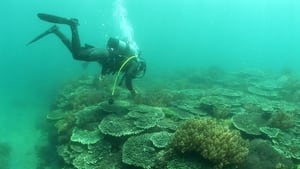
S8 Ep16
4.0
4th Jul 2017
The Nanyo area of Ehime Prefecture is blessed with abundant water. It lies on the west coast of Shikoku Island, looking out on the Uwa Sea and bathed by the warm Kuroshio Current. The Onigajo Mountain Range receives substantially more rain, with some 2,700 millimeters observed each year. Much of that water flows quickly down to the sea, molding the topography of the area. Offshore, the warm water from the Kuroshio Current mixes with the nutrient-rich fresh water from the mountains, making an ideal habitat for coral and a remarkable variety of marine life. On this edition of Journeys in Japan, Michael Keida follows the flow of this water, from the mountains slopes down to the ocean bed.
S8 Ep17
4.0
11th Jul 2017
Until about 700 years ago, princesses from Japan's imperial family were sent to act as high priestesses at Ise Jingu, the ancient shrine that is considered the most sacred site in Japan's Shinto religion. These servants of the deities were known as Saio and the place where they lived was known as Saiku. In the 14th century, the site was abandoned and eventually it was only known from the ancient legends. But in 1970 excavations began, which confirmed that Saiku stood in the modern-day town of Meiwa-cho, in Mie Prefecture. In this edition of Journeys in Japan, Felicia Gonzalez visits Meiwa-cho to explore this legendary site. She observes the annual Saio Festival, in which people dress in period costume. And she meets the people of this town where present-day culture meets ancient history and the people take pride in the traditions of the past.
S8 Ep18
4.0
18th Jul 2017
Mount Daisen, in Tottori Prefecture in western Japan, stands 1,729 meters high. Often noted for its resemblance to Mount Fuji, it is ranked 3rd on a list of celebrated mountains in Japan. It's also been an object of worship of a mountain religion since ancient times. Daisen-ji temple was built about 1,300 years ago. From olden days, people have come to pray to the Jizo (guardian diety of travelers and children) enshrined at the temple. Our reporter John Daub follows the old pilgrim's path to Daisen-ji temple, encountering traces of the mountain religion.
S8 Ep25
4.0
19th Sep 2017
Kyle Card catches Kochi's summertime festival fever by observing, and even joining in, the dynamic Yosakoi where hundreds of colorfully attired people dance throughout the city. He meets people who have long been involved in this freestyle festival, which got its start in the lean postwar years as a way to revitalize the community. And as the city gears up for the major event, which attracts people from all around Japan, Kyle comes across teams passionately rehearsing in the streets. Then, finally, the streets explode in color, music, and dance. Don't miss the singular Yosakoi Festival.
S9 Ep7
4.0
27th Mar 2018
Every year from February to March, ice floes from Russia's Amur River float across the Okhotsk Sea to the shores of eastern Hokkaido, packing against the shoreline. On this edition of Journeys in Japan, Roman Markovtsev from Russia explores this frozen coast and experiences the winter wonderland of ice, both above and below the surface. He joins fishermen who fish in the traditional way on a frozen lake. And he meets with local people who have taken up the sport of curling in a big way.
S3 Ep7
5.0
21st Feb 2012
1,200 years ago, the Buddhist saint Kukai (also known as Kobo Daishi) established 88 temples in Shikoku. Later, it became popular to make a pilgrimage, along a route around the island, visiting all of the temples. This pilgrimage is known as ohenro, and the pilgrims are called ohenro-san. This week on Journeys in Japan, Bene continues on the second stage of her pilgrimage, through Kochi Prefecture. The trail is hard, covering a distance of about 350 km. Bene visits a cave on Cape Muroto where the young priest Kukai meditated and achieved enlightenment. Bene continues to Kochi City, visiting a temple where she experiences the spiritual discipline of copying sutras by hand. She encounters many people along the route, including other pilgrims. In Kuroshio Town, she stays the night at a homestay-style inn, and establishes a deep connection with the couple who run the inn.
S3 Ep35
5.0
2nd Oct 2012
On this edition of Journeys in Japan we visit Tokushima, the home of aizome indigo dye. Aizome is made from the indigo plant. The majority of domestic indigo plant production is based in Tokushima Prefecture. The traditional skills for producing indigo dye have been passed down here for generations by master dyers. The indigo dye industry was prosperous, and the arts flourished. The Awa Ningyo Joruri puppet theater, which has been designated as a significant intangible folk cultural asset, is one of them. Our reporter Deborah from Malaysia explores the traditional arts and crafts of Tokushima.
S4 Ep5
5.0
19th Feb 2013
This week we journey to the foot of Mt. Fuji in winter to discover the area's majestic nature.
S4 Ep10
5.0
2nd Apr 2013
Since ancient times, formal gardens have offered a distinctive expression of Japan's traditional aesthetic. Often featuring lush greenery, bodies of water and seemingly random arrangements of rock, these gardens can be viewed as nature in microcosm. Our reporter is Joseph Cali, a designer who has published books on Japanese gardens. On this edition of Journeys in Japan, Joseph visits Shikoku. He discovers the beauty of the natural environment - and the way it is reflected in two very contrasting traditional gardens.
S4 Ep36
5.0
12th Nov 2013
Kagura is a ritual dance of Shinto, the indigenous faith of Japan. Since ancient times, it has been offered to the gods in thanks for the blessings of nature. In the Iwami region of Shimane Prefecture, Kagura has developed independently of other styles. Contemporary dancer, Alessandra Lupi visits a small village to explore the many dimensions of this magical performing art.
S5 Ep11
5.0
15th Apr 2014
In the 2nd part of our Kyoto series, Sara Ariafar visits the ancient capital to explore the culture of incense. Japanese have enjoyed scents in unique ways for more than 1,000 years. She learns about how the aristocracy used incense in aesthetic and entertainment pursuits. She is also invited to experience Kodo, an incense ceremony.
S1 Ep1
2.5
2nd Feb 2010
Fukuoka facing the Genkai Sea has been geographically and historically a city open to East Asia. It still maintains links with many Asian countries-- from Port of Fukuoka, there is a ferry which runs between Fukuoka and Busan in the Republic of Korea. Walking through the city, our reporter Vincent encounters a wide variety of things which ties to East Asia. (Excerpt)
S1 Ep2
2nd Mar 2010
Toyama is a city surrounded by tall mountains and has a population of 400,000. It's a place where unique businesses have sprung up since the days of old. Toyama's medicine became famous, in particular, for this gastric medicine, first made here three centuries ago - it's a blend of over 20 ingredients extracted from medicinal herbs found in the mountains of Toyama. The recipe may have changed slightly over the years but the medicine is still used today. Traveling salesmen used to peddle this medicine all over the country. In an age when there was little medicine available, the cures these salesmen offered were very much appreciated. This was how Toyama's medicine spread to households nationwide. (Excerpt)
S1 Ep3
30th Mar 2010
Furano, located just about in the center of Hokkaido Prefecture is becoming a popular destination for foreign skiers. The winter season in Furano presents various options to enjoy the great outdoors. The most exciting of all is an adventure trip on a dog sled. Our reporter Sotaro Nagasawa visits Hidetaka Matsubara in Minami Furano. Matsubara owns 29 sled dogs which are hybrids of Siberian husky and wolf. This edition introduces you to an adventure which can be experienced only in deep snow of Hokkaido during winter. (Excerpt)
S1 Ep4
6.0
6th Apr 2010
The navigator for this episode of "journeys in japan" is opera director Dario Ponissi. His destination is Naoshima of Kagawa Prefecture, a small island in the Seto Inland Sea, with a population of some 3300. Naoshima has gathered global attention as a center of contemporary art. (Excerpt)
S1 Ep5
13th Apr 2010
Kamakura lies on the coast to the south of Tokyo, surrounded on three sides by hills, and looking out to the sea. Eight centuries ago, a samurai warrior seized power and set up his capital here. Today on "journeys in japan", our reporters search out the samurai spirit that's been passed down since ancient times. (Excerpt)
S1 Ep6
20th Apr 2010
This week, "journeys in japan" visits a city of science—Tsukuba in Ibaraki Prefecture, at the foot of Mt. Tsukuba. In 1963, under a national policy, the city was opened up as a place for research on advanced technology. It's now home to 300 research institutes. Our reporter Judit Kawaguchi discovers the charms of the city and its state-of-the-art technology. (Excerpt)
S1 Ep7
27th Apr 2010
In this episode of "journeys in japan", our reporter, Adeyto, visits Oshino Village in Yamanashi Prefecture, in the northern foothills of Mt. Fuji., Japan's highest mountain. Her guide is the well-known actor Hatsunori Hasegawa. He lives in Tokyo but he loves the natural environment around Oshino Village so much that he built a villa there seven years ago. He shows Adeyto some of the beautiful spots in the area, and introduces her to the local people. (Excerpt)
S1 Ep8
11th May 2010
In this week's Journeys in Japan, we visit the Tottori Sand Dunes, the largest in Japan, in Tottori Prefecture. The Tottori Sand Dunes skirt the Sea of Japan in the southwestern part of Japan. The dunes were created naturally over 100,000 years by sediments carried from the mountains down the river and eventually blown up onto the shore. Our reporter, Vincent Giry, wonders into the land of majestic dunes and meets people who live together with sand. (Excerpt)
S1 Ep9
18th May 2010
In this edition, JJ goes to a secluded part of northern Izu Peninsula, facing Suruga Bay. Suruga Bay, the deepest bay in Japan, extends 2,500 meters below sea level. It's famous for its rich variety of seafood. Heda, a small fisherman's town, is especially famous for its catch of deep-sea fish and the Japanese spider crabs-the largest crab in the world, which lives at the depth between 150 to 800 meters. (Excerpt)
S1 Ep10
25th May 2010
In this week's journeys in japan, we visit the Toyokawa Inari in Aichi Prefecture, one of the largest Inari temples in Japan. Many of temples and shrines are protected by special guardian deities which is foxes. The animals are also believed to be messengers of the gods. Such temples and shrines are called Inari. (Excerpt)
S1 Ep11
1st Jun 2010
On this edition of 'journeys in japan', we visit Himeji Castle, one of the few castles in Japan that have managed to survive in their original form, the way they were built about four centuries ago. Renowned for its beauty, this fortress is registered as a UNESCO World Heritage site, and draws numerous tourists every year, both from Japan and around the world. However, in April work began on a major restoration program. This magnificent landmark will gradually be covered in scaffolding from the bottom upwards; by the autumn of 2010, the main keep will be completely hidden from view. The people of Himeji are concerned that this will mean that fewer tourists come to visit their city. So they have been coming up with ideas to ensure that Himeji remains a major draw for visitors. Our reporter, George Burdaniotis, visited the city to find out what is going on. (Excerpt)
S1 Ep12
15th Jun 2010
This week, we will focus on Naruto City in Tokushima Prefecture and introduce people who have made use of the bounties of nature in unusual ways to create products with added value.This week, we will focus on Naruto City in Tokushima Prefecture and introduce people who have made use of the bounties of nature in unusual ways to create products with added value. The sea off Naruto City has a strong current that flows at about 20 kilometers per hour and forms natural whirlpools that can reach a diameter of 30 meters. For this reason, fish that are tossed about in the currents are known in Japan to be tasty. Sea breams are said to be especially exquisite, and the best culinary delights will be shown. We will also visit a popular museum with a collection of artworks made with tiles that have been locally produced using the sea sand of Naruto. Furthermore, we will introduce a festival held in Tokushima, a place that is progressing as the city of LED.
S1 Ep13
22nd Jun 2010
The pine-studded sandbar spans Miyazu Bay, facing the Sea of Japan in northern Kyoto. The accumulation of white river sand over thousands of years sculpted this impressive strip of land, which has been the subject of significant poems and paintings for more than 1000 years. In this edition of "journeys in japan," our reporter, Judit Kawaguchi, meets the warm residents of this gorgeous area where history is very much alive. (Excerpt)
S1 Ep14
29th Jun 2010
On this edition of "journeys in japan" we head to northern Japan to visit a historic city with a warrior legacy -- Yonezawa in Yamagata prefecture. For long years, it flourished as a castle town and was a home to many samurai. Our reporter JJ explores its samurai legacy. (Excerpt)
S1 Ep15
6th Jul 2010
Geoparks, created by UNESCO's initiative in 2004, are aimed for people to learn more about the Earth and for invigorating local economies by using the parks for tourism. This time, we travel by car, starting from one of the geoparks - Mount Unzen in Shimabara, to Sakurajima in Kagoshima. It is a trip to feel the Earth's great energy and to learn about volcanoes and their connections to people's livelihood. (Excerpt)
S1 Ep16
13th Jul 2010
In this week's Journeys in Japan, we visit Mino City in Aichi Prefecture, a town famous for Japanese traditional paper "Washi". Washi is made from the fibers of tree bark and all handmade by traditional artisans has a beautiful appearance and texture. There are about 30 artisans who still produce washi in the traditional way. Tatsuo Ichikawa is one of oldest washi artisans in Mino city. He took over from his father in the family business. He explained to us how washi is made. (Excerpt)
S1 Ep17
20th Jul 2010
On this edition of journeys in japan, JJ visits Minabe, Wakayama Pref., whose products are an essential part of Japanese food culture. Minabe produces more ume fruit than anywhere else in Japan - 30,000 tons every year. The type of ume grown in the area is called Nanko-ume. They are particularly large and flavorful, and are considered the highest quality in Japan. Most of the fruit harvested is pickled to make umeboshi, one of Japan's most distinctive foods. (Excerpt)
S1 Ep18
27th Jul 2010
Sendai is the biggest city in northeastern Japan. It's also the hometown of Kumiko Mori, a popular singer and entertainer who appearis frequently on stage and TV. She meets up with NHK WORLD reporter Vincent Giry, and they visit many spots connected with the samurai warlord Date Masamune, who founded Sendai some 400 years ago as his castle town and military base. (Excerpt)
S1 Ep19
3rd Aug 2010
Nara was established as the capital more than 1000 years ago. It was the country's first major administrative center and was called Heijo-kyo. This year marks the 1300th anniversary of Heijo-kyo and the city is hosting many commemorative events, including the unveiling of re-created palace buildings. Our reporter Ayana Fuentes Uno visits the ancient capital, which became the foundation of a nation. (Excerpt)
S1 Ep20
7th Sep 2010
On this edition, we present the highlights from our past broadcasts. Our Reporters travel across Japan, where they discover fascinating local culture and people. (Excerpt)
S1 Ep21
14th Sep 2010
The Sekita mountain range, soaring 1000 meters above sea level, straddles Nagano and Niigata Prefectures. Hikers can now walk along it on the "Shin-etsu Trail." It extends along the ridge for distance of 80 kilometers, from Mount Madarao in Nagano Prefecture to Mount Amamizu in Niigata Prefecture. Our travelers will spend five days walking the full distance of the "Shin-etsu Trail". Our guide is a nature writer, Noriyoshi Kato. Kato has walked several long trails in Japan and abroad. (Excerpt)
S1 Ep22
21st Sep 2010
This time, "journeys in japan" will travel to Uchiko on the island of Shikoku. Surrounded by mountains and blessed with abundant nature it is situated almost at the center of Ehime Prefecture. The town flourished along with the production of vegetable wax in the latter part of the 19th century. Visiting the town is street performer and mathematician, Peter Frankl. (Excerpt)
S1 Ep23
28th Sep 2010
Tochigi Prefecture is situated in the most northern part of the Kantō region, and is a prefecture that is inland, not facing the coast. Though only 70 kilometers away from Tokyo, it is an area that still retains a lush mountain landscape. This program goes on a journey to visit the people who live in the natural environment of such a mountainous area, taking a look at their work and everyday lives. (Excerpt)
S1 Ep24
5th Oct 2010
On this week's "journeys in japan," we visit Karatsu city in Saga prefecture. The area, which looks out to the sea, is blessed with a warm climate. People here have long enjoyed marine sports. A legendary French diver had strong ties with the sea of Karatsu. Jacques Mayol was the first man in the world to free dive to 100 meters. And it was a childhood encounter with a dolphin off the coast of Karatsu that inspired him to dive. Our reporter Ian Thomas Ash investigates the diver's deep connection to Karatsu. (Excerpt)
S1 Ep25
12th Oct 2010
Izu-Oshima, the largest of the seven islands in the Izu chain, lies 120 kilometers south of Tokyo. It was formed by volcanic action, and the volcano in the center of the island is still active. Because of its size, hilly terrain and tranquil environment, Oshima is a popular training base for long-distance runners. Double Olympic medalist Yuko Arimori used the island as her training base ahead of her successful marathons. In this episode of "journeys in japan", Arimori visits Oshima with our reporter, JJ, and takes him to some of her favorite places on the island. (Excerpt)
S1 Ep26
19th Oct 2010
Hita City in Oita Prefecture is a quiet town with a population of about 70-thousand, located in northern part of Kyushu in southwestern Japan. It is surrounded by many mountains, including the Aso-Kuju and the Hiko mountain systems. Abundant water resources flowing out from these mountains merge in the Hita basin. Thus many rivers flow through Hita City and are serving the local people in their daily lives. (Excerpt)
S1 Ep27
26th Oct 2010
Nelson Babin-Coy is off to explore the Aizu region in Fukushima Prefecture by train. Nelson's first stop is at Yunokami-Onsen. The area is a hot-spring village with many traditional inns and guesthouses. One of the things Nelson wants to do on this journey is to bathe in an open-air bath looking out over the river. Three and a half hours from the hustle and bustle of Tokyo, the hot spring facing the valley feels like paradise! Ōuchi-juku near Yunokami-Onsen was a post town on the old road. Its main street is flanked by more than 40 old wooden houses, which were built as lodgings for travelers over 300 years ago. Nelson stays in one of the traditional buildings and tastes local cuisine prepared by the guesthouse owner. Traveling slowly by train through this scenic countryside, Nelson finally approaches his destination, Aizu-Wakamatsu. Aizu-Wakamatsu developed as a major castle town in feudal times and has remained the main city of Aizu until this day. (Excerpt)
S1 Ep28
2nd Nov 2010
The Seto Inland Sea located in western Japan is the country's largest inland sea. There is a road which runs across the inland sea and connects a chain of small islands. It is known as Shimanami Kaido. A 60 km long road which connects Onomichi City in Hiroshima Prefecture in Honshu island and Imabari City in Ehime Prefecture in Shikoku island has become a popular cycling route and gathers cyclists from all over Japan. In today's "journeys in japan", our reporter travels this road on his bicycle and introduces the Shimanami Kaido which allows you to take in the beautiful scenery while crossing the sea and islands in the inland sea. (Excerpt)
S1 Ep29
9th Nov 2010
Adeyto visits three sites, starting in Kawasaki for a night factory tour. Most participants, including Adeyto, are into photographing the urban industrial landscape. What's the attraction of large-scale public works' sites for so many Japanese today? Next Adeyto travels north of Tokyo to rural Gunma Prefecture to take in a vast chamber located deep inside a mountain. The Kannagawa Hydropower Plant attracts more than 10 thousand visitors a year. The final destination of Adeyto's tour of man-made structures is a deserted island in Nagasaki Prefecture. Traveling 17 kilometers off of Nagasaki's Port, you'll come to Hashima. Hashima was once a coal mining facility, home to 5000 people. When resources were exhausted, the island was abandoned in 1974. Since it opened to the public last year, 70 thousand people have visited despite the fact that only concrete ruins remain. For many tourists, they find a silent message here. (Excerpt)
S1 Ep30
16th Nov 2010
Kure is a 30-minute train ride from Hiroshima. The port town has a population of 250-thousand. The historic shipbuilding town still turns out large tankers and other vessels. It's a major marine transportation hub in the Seto Inland Sea with hundreds of ships going in and out of the port daily. It developed in the Meiji Period around the establishment of a naval base. The sea, ships and navy are woven into Kure's history. Today, we'll explore the culinary culture nurtured in this port town. (Excerpt)
S1 Ep31
23rd Nov 2010
Because of Japan's volcanic terrain, natural hot springs are found throughout country. Known as onsen, they are one of the highlights of any visit to Japan. There are more than 3,000 onsen in Japan. And many of them are rather different to typical hot spring spa resorts. There are lots of different ways to enjoying these onsen. Some have become popular among visiting tourists. Others are peaceful places out in the wild where you can sit and soak in seclusion. On this edition of "journeys in japan," Judit is visiting Hachimantai, in the northern part of Honshu, Japan's main island. (Excerpt)
S1 Ep32
30th Nov 2010
On this edition of Journeys in Japan , we visit the Iya Valley, in the center of Shikoku.On this edition of journey in japan , we visit the Iya Valley, in the center of Shikoku. Until about 40 years ago, it was cut off from the rest of the island, and people living there had little interaction with other communities. This allowed the traditional customs and lifestyle to remain unchanged for centuries. Our reporter, Adeyto, takes a local train into the mountains of Shikoku, following the course of the Yoshino River, the longest river on the island. Then she has to take a bus along a mountain road that's so only wide enough for one vehicles at a time. (Excerpt)
S1 Ep33
7th Dec 2010
Yakushima is located 60 kilometers off Kagoshima Prefecture, in Japan's southern main island of Kyushu. It's blanketed in lush forest, and has mountains that soar nearly 2,000 meters above sea level. With its more than 1,000-year-old ancient cedars and unique ecosystem created by abundant rainfall and warm climate, Yakushima has been registered as a World Heritage site. Our reporter, Bene, has long wanted to visit this magical place. She is also looking forward to experiencing the island's famous hospitality. (Excerpt)
S1 Ep34
14th Dec 2010
In this week's journeys in japan, we visit Kanazawa city in Ishikawa Pre. 99% of the gold leaf in Japan is made in this city. Gold has been adding color to Japan's traditional culture. At this time travelers are going to find out how gold is processed into a thin foil to make gold leaf. And in addition, they will introduce the amazing new gold leaf products developed recently in Kanazawa city. (Excerpt)
S1 Ep35
21st Dec 2010
This week on "journeys in japan" we visit Koyasan in Wakayama Prefecture. It's an ancient Buddhist sanctuary, far removed from the secular world. More than 1000 priests, engaged in daily ascetic practices, reside in the mountain hamlet. There are 117 temples in Koyasan, but the whole complex is regarded as one big temple for Shingon Esoteric Buddhism. Koyasan was registered as a World Cultural Heritage site in 2004. It draws more than 1 million tourists every year. Our reporter JJ has been in Japan for 10 years, but this will be his first time to stay at a temple. JJ, like others, is on a spiritual journey to experience the Koyasan way of life, and perhaps even encounter a few things to incorporate in life at home. (Excerpt)
The first episode of Journeys in Japan aired on February 02, 2010.
The last episode of Journeys in Japan aired on August 12, 2025.
There are 535 episodes of Journeys in Japan.
There are 16 seasons of Journeys in Japan.
Yes.
Journeys in Japan is set to return for future episodes.